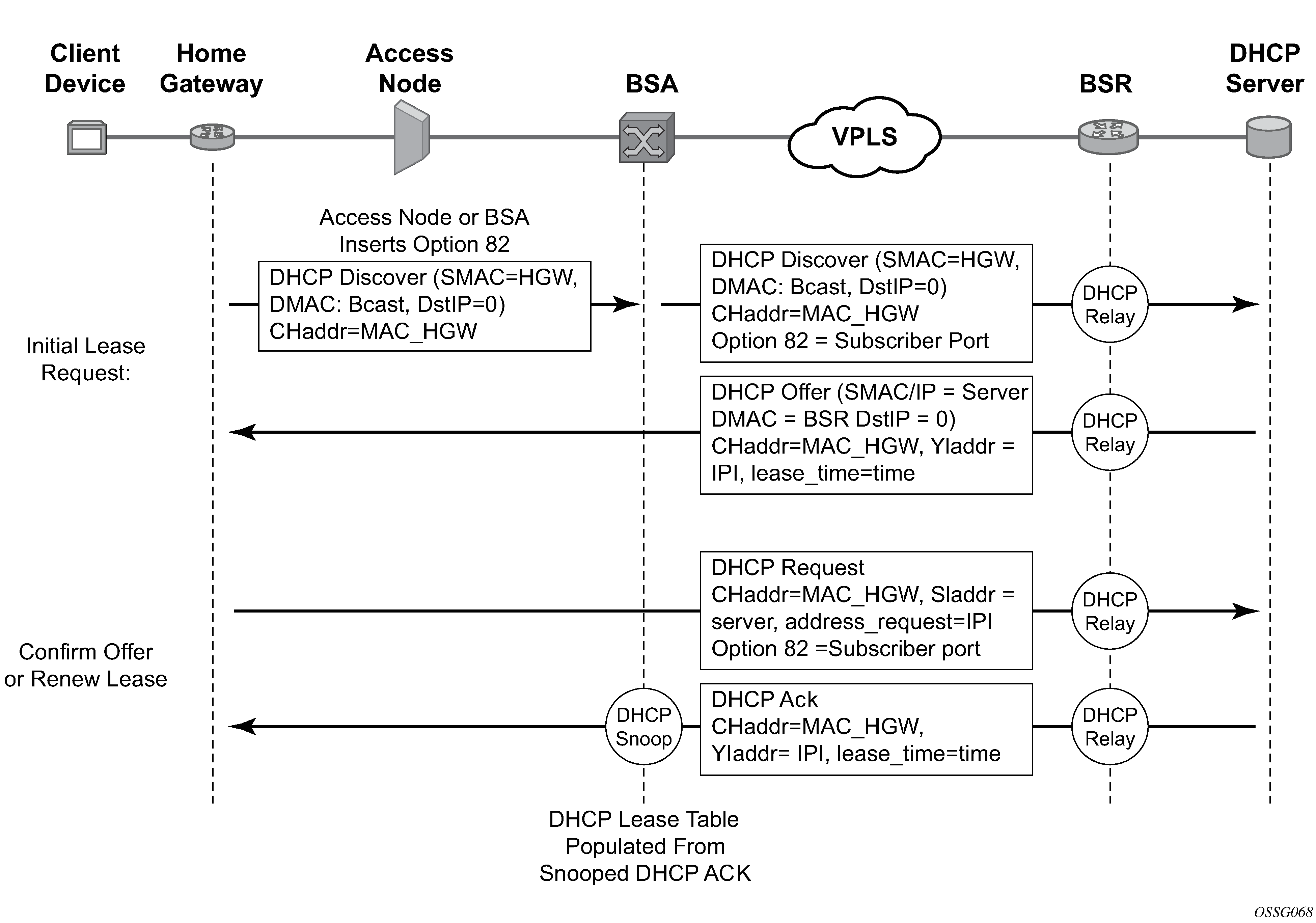In a Triple Play network, client devices (such as a routed home gateway, a session initiation protocol (SIP) phone, or a set-top box) use the Dynamic Host Configuration Protocol (DHCP) to dynamically obtain their IP address and other network configuration information.
DHCP is defined and shaped by several RFCs and drafts in the IETF DHCP working group including the following:
RFC 1534, Interoperation Between DHCP and BOOTP
RFC 2131, Dynamic Host Configuration Protocol
RFC 2132, DHCP Options and BOOTP Vendor Extensions
RFC 3046, DHCP Relay Agent Information Option
The DHCP operation is shown in Figure: IP address assignment with DHCP.

During bootup, the client device sends a DHCP discover message to get an IP address from the DHCP Server. The message contains:
destination MAC address
broadcast
source MAC address
the MAC address of the client device
client hardware address
the MAC address of the client device
If this message passes through a DSLAM or other access node, typically the relay information option (Option 82) field is added, indicating shelf, slot, port, VPI, VCI, and so on, to identify the subscriber.
DHCP relay is enabled on the first IP interface in the upstream direction. Depending on the scenario, the DSLAM, BSA, or the BSR relays the discover message as a unicast packet toward the configured DHCP server. DHCP relay is configured to insert the GIADDR (gateway IP address) to indicate to the DHCP server in which subnet an address should be allocated.
The DHCP server looks up the client MAC address and Option 82 information in its database. If the client is recognized and authorized to access the network, an IP address is assigned and a DHCP offer message returned. The BSA or BSR then relays this back to the client device.
It is possible that the discover reached more than one DHCP server and more than one offer is returned. The client selects one of the offered IP addresses and confirms that it wants to use this in a DHCP request message, sent as unicast to the DHCP server that offered it.
The DHCP server confirms that the IP address is still available, updates its database to indicate it is now in use, and replies with a DHCP ACK message back to the client. The ACK also contains the Lease Time of the IP address.